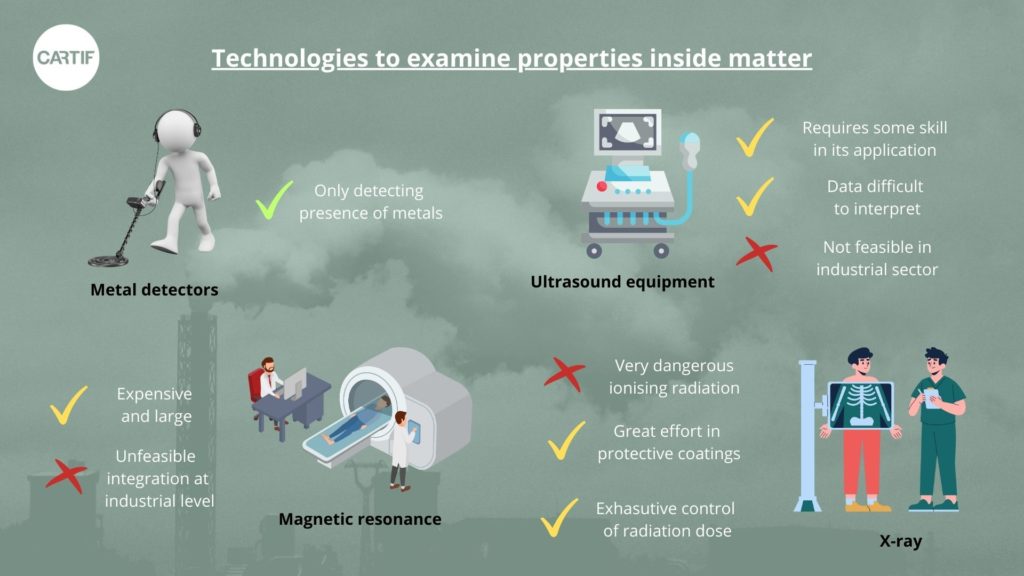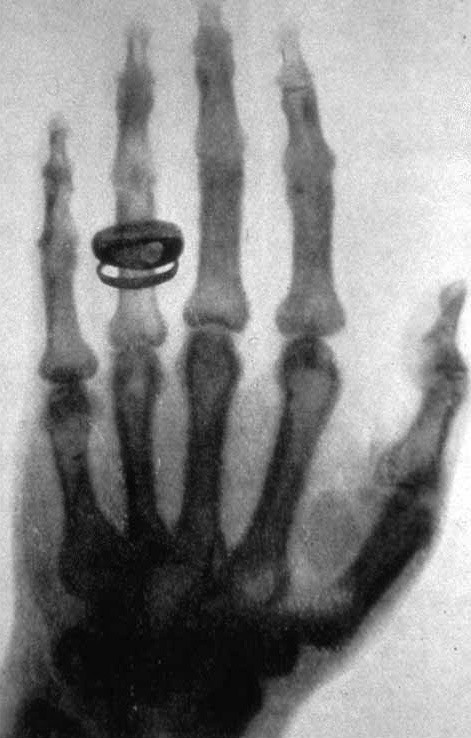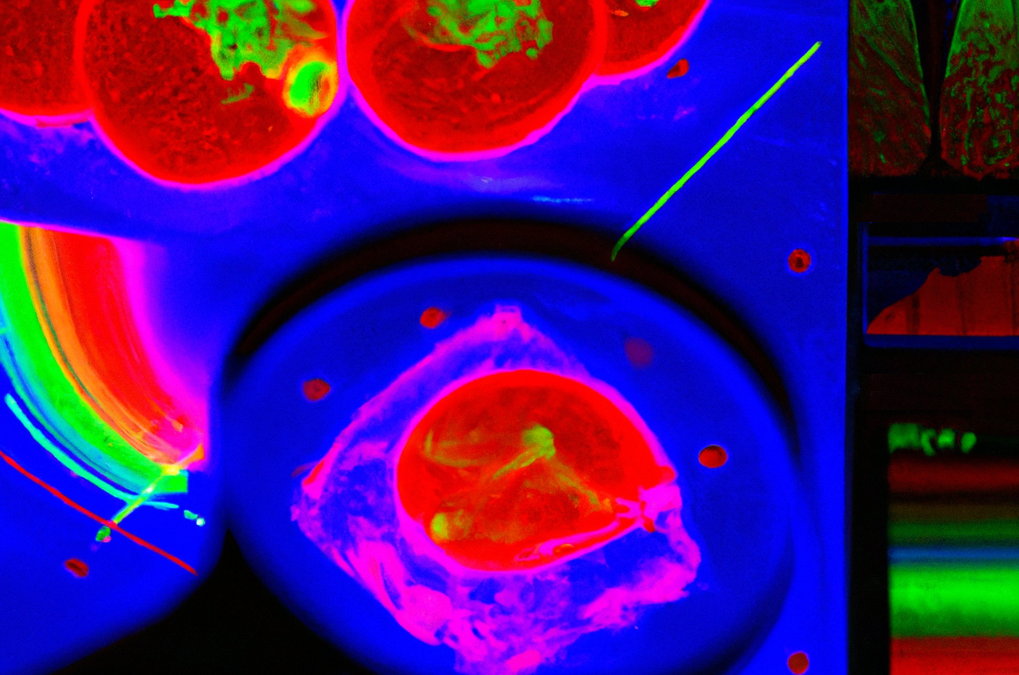In this post, I would like to talk about devices capable of acquiring images in the Terahertz spectral range, an emerging technology with great potential for implementation in industry, especially in the agri-food sector.
Currrently, machine vision systems used in industry work with different ranges of the electromagnetic spectrum, such as visible light, infrared, ultraviolet, among others, which are not able to pass through matter. Therefore, these technologies can only examine the surface characterisitcs of a product or packaging, but cannot provide information from the inside.
In contrast, there are other technologies that do allow us to examine certain properties inside matter, such as metal detectors, magnetic resonance imaging, ultrasound and X-rays. Metal detectors are only capable of detecting the presence of metals. Magnetic resonance equipment is expensive and large, mainly used in medicine, and its integration at industrial level is practically unfeasible. Ultrasound equipment requires contact, requires some skill in its application and is difficult to interpret, so it is not feasible in the industrial sector. Finally, X-rays are a very dangerous ionising radiation, which implies a great effort in protective coatings and an exhaustive control of the radiation dose. Although they can pass through matter, X-rays can only provide information about the different parts of a product that absorb radiation in this range of the electromagnetic spectrum.

From this point of view, we are faced with a very important challenge, to investigate the potential of new technologies with the capacity to inspect, safely and without contact, the inside of products and packaging, obtaining relevant information on the internal characteristics, such as quality, condition, presence or absence of elements inside, homogeneity,etc.
Looking at the options, the solution may lie in promoting the integration in industry of new technologies that work in non-ionising spectral ranges with the ability to penetrate matter, such as the terahertz/near-microwave spectral range.

In 1985, Professor Röntgen took the first radiological image in history, his wife´s hand. 127 years have passed and research is still going on. In 1995, the first image in the Terhaertz range was captures, son only 27 years have passed since then. This shows the degree of maturity of Terahertz technology, still in its early stages of research. This radiation is not new, we know it is there, but today it is very difficult to generate and detect it. The main research work has focused on improving the way this radiation is emitted and captured in a coherent way, using equipment developed in the laboratory.
In recent years things have changed, new optical sensors and new terahertz sources with a very high industrialisation capcity have been obtained, which opens the doors of industry to this technology. Now there is still a very important task of research to see the scope of this technology in the different areas of industry.
CARTIF is committed to this technology and is currently working on the development of the industrial research project AGROVIS, “Intelligent VISual Computing for products/processes in the AGRI-food sector“, a project funded by the Junta de Castilla y León, framed in the field of computer vision (digital enabler of industry 4.0) associated with the agri-food sector, where one of the main objectives is to explore the different possibilities for automatically inspecting the interior of agri-food products safely.
- Terahertz technologies in industry - 31 March 2023
- Robust solutions with simple ideas - 26 August 2022
- Hardware and software ‘easy-to-use’ - 9 March 2018
